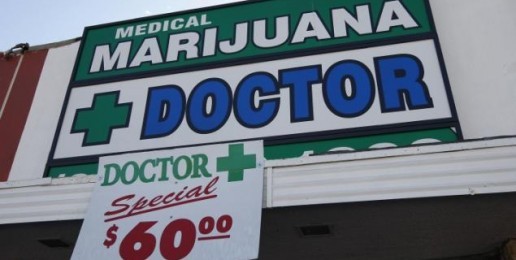
Written by Dr. Mitchell S. Rosenthal
Pot is not legal—at least not yet. But it’s not exactly illegal either—not anymore. More than a dozen states have decriminalized the possession of marijuana. Nearly a score of them sanction its medical use. Voters in Washington and Colorado have made recreational use of the drug legal in their states.
One way or another, all of these changes mean that there will be more marijuana in homes for young people to find and use. Granny may be smoking it for glaucoma, but there is nothing benign about the effects of pot on a juvenile brain. Whatever its legal status, pot is not harmless.
Marijuana hasn’t achieved its present status of relative social acceptability by virtue of its virtues, but rather despite mounting evidence of the dangers it poses, especially to young users—and even more to users under age 18. While adults may be at risk, too, a considerable number of them appear to use marijuana in relative safety. So the case for prohibition has rested most securely on potential harm to adolescents.
Pot’s potential for harm has as much to do with the nature of adolescence as it does with the nature of THC, the active ingredient in marijuana. That’s because kids do foolish things because they are kids—and their brains are not yet fully developed. Unfortunately, the part of the brain that censors dumb and dangerous behavior is last to develop. It doesn’t generally come fully on line until the mid-20s, but the pleasure-seeking part of the brain is fully functioning by puberty.
So, kids do foolish things that are often risky—and get so much riskier when teenagers are high. Moreover, smoking marijuana is by itself a risky enterprise, and most addictive for the young. A study published in the Journal of Clinical and Experimental Pharmacology in 1994 found that one in 10 young people who use marijuana will go on to become addicted. Pot smoking puts the user at risk of psychosis, changes in the anatomy of the brain, and damage to the heart and lungs. It retards maturation and impairs learning, memory and judgment—no small matters during the adolescent years.
Among the many thousands of adolescents we have treated at the programs of Phoenix House over the past four decades, the overwhelming majority have used no drug more potent than marijuana. And for many of those young people, the course of their lives has been altered, sometimes permanently and often tragically, with suicides, car accidents and drownings—or with interrupted education, chronic depression and joblessness.
Federal law still outlaws marijuana. Yet President Obama told Barbara Walters in December that “it does not make sense from a prioritization point of view for us to focus on recreational drug users in a state that has already said that under state law that’s legal.” Meanwhile, the Senate Judiciary Committee plans hearings to find some legislative route around the federal-state impasse.
Given all that we know, the sensible strategy at this point is to send an unequivocal message that “legal” is not a synonym for “safe.” This is not a novel concept. We have plenty of examples. Alcohol is legal and, in many ways, it can be even more threatening to teens than marijuana. Hand guns (and assault rifles) are also legal, but they are hardly benign.
While rational societies generally make some effort to protect children from obvious dangers, it is fundamentally a parental responsibility—and one that we humans share with the rest of the animal kingdom. It may be helpful if there is law on the parents’ side. But this is not essential, nor does its absence diminish in any way a parent’s familial obligations.
There will be restriction on legal marijuana sales to children—following the alcohol template, states considering legalization use 21 as the legal age. But we cannot expect such restrictions to be any more effective in limiting teen marijuana use than they are in limiting teen smoking or drinking.
And then there is the issue of easier-than-ever access as more adults can buy or grow marijuana for their personal use. In 2000, a study commissioned by Phoenix House found that among 600 young people in treatment, only 1% were introduced to drugs by a dealer, and that a primary source of illicit drugs was relatives or family friends.
At this point in the country’s history, whether pot is legal or not is no longer the main issue. The issue is the danger that marijuana poses to kids, how parents can protect their children from that danger, and what the rest of society—absent the criminal justice system—can do to support them in that fight.
Dr. Rosenthal, a child psychiatrist, is the founder of Phoenix House, the nation’s largest nonprofit substance-abuse treatment and prevention organization.
A version of this article appeared January 17, 2013, on page A15 in the U.S. edition of The Wall Street Journal, with the headline: Legalizing Pot Won’t Make It Any Safer.





























